Detailed Report on Thermodynamics, Heat Engines, and Cryogenic Systems
VerifiedAdded on 2023/06/15
|8
|855
|68
Report
AI Summary
This report provides an overview of thermodynamics and heat engines, with a focus on cryogenic systems. It delves into the principles behind cryogenic systems, including the conversion of air into liquid form and its use in generating electricity. The report also explains the laws of thermodynamics, particularly in the context of a steam power plant. Furthermore, it defines and differentiates between constant volume and constant pressure processes. Finally, the report includes calculations for the index of compression and work done in a thermodynamic process. Desklib offers a wealth of similar solved assignments and past papers for students.
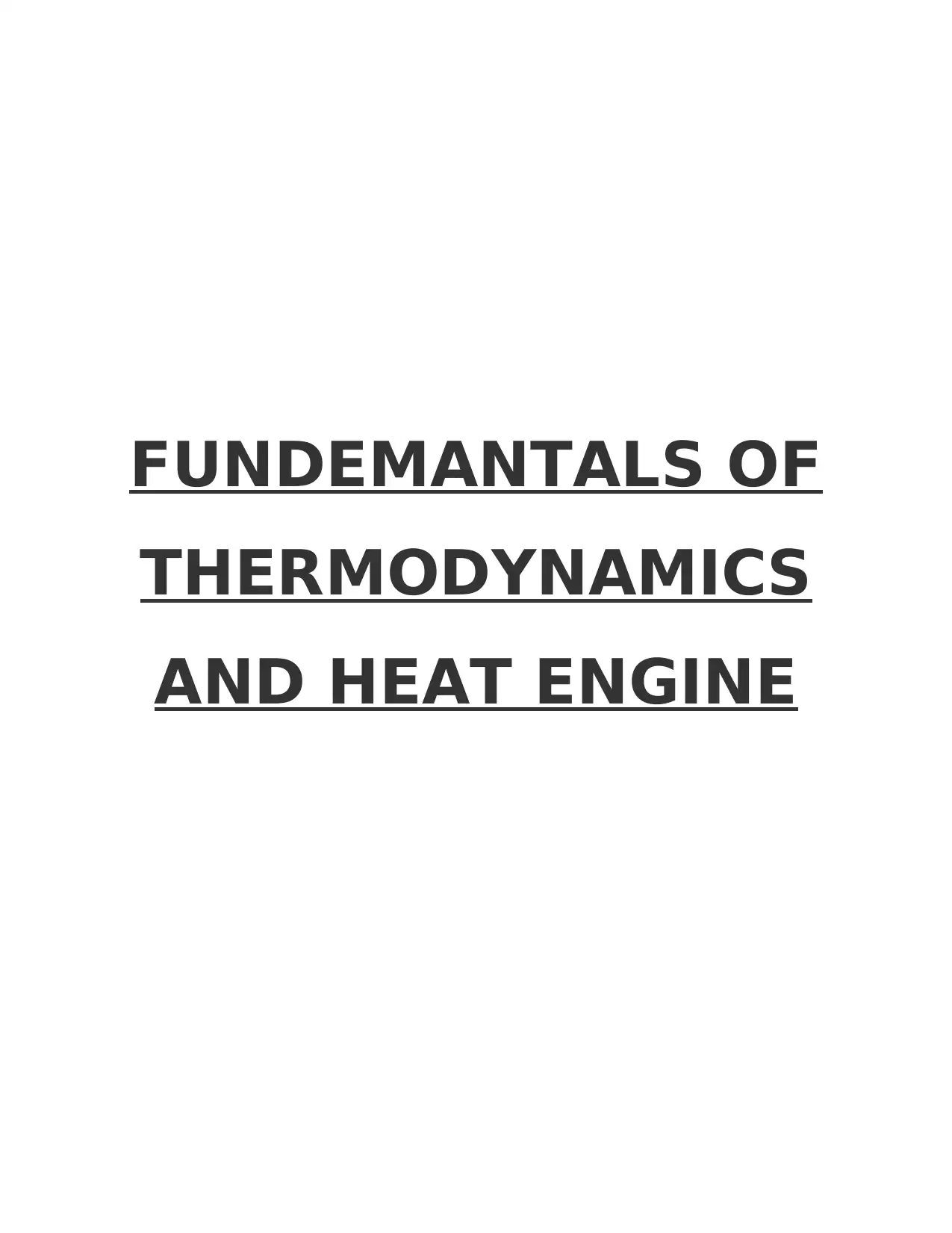
FUNDEMANTALS OF
THERMODYNAMICS
AND HEAT ENGINE
THERMODYNAMICS
AND HEAT ENGINE
Paraphrase This Document
Need a fresh take? Get an instant paraphrase of this document with our AI Paraphraser
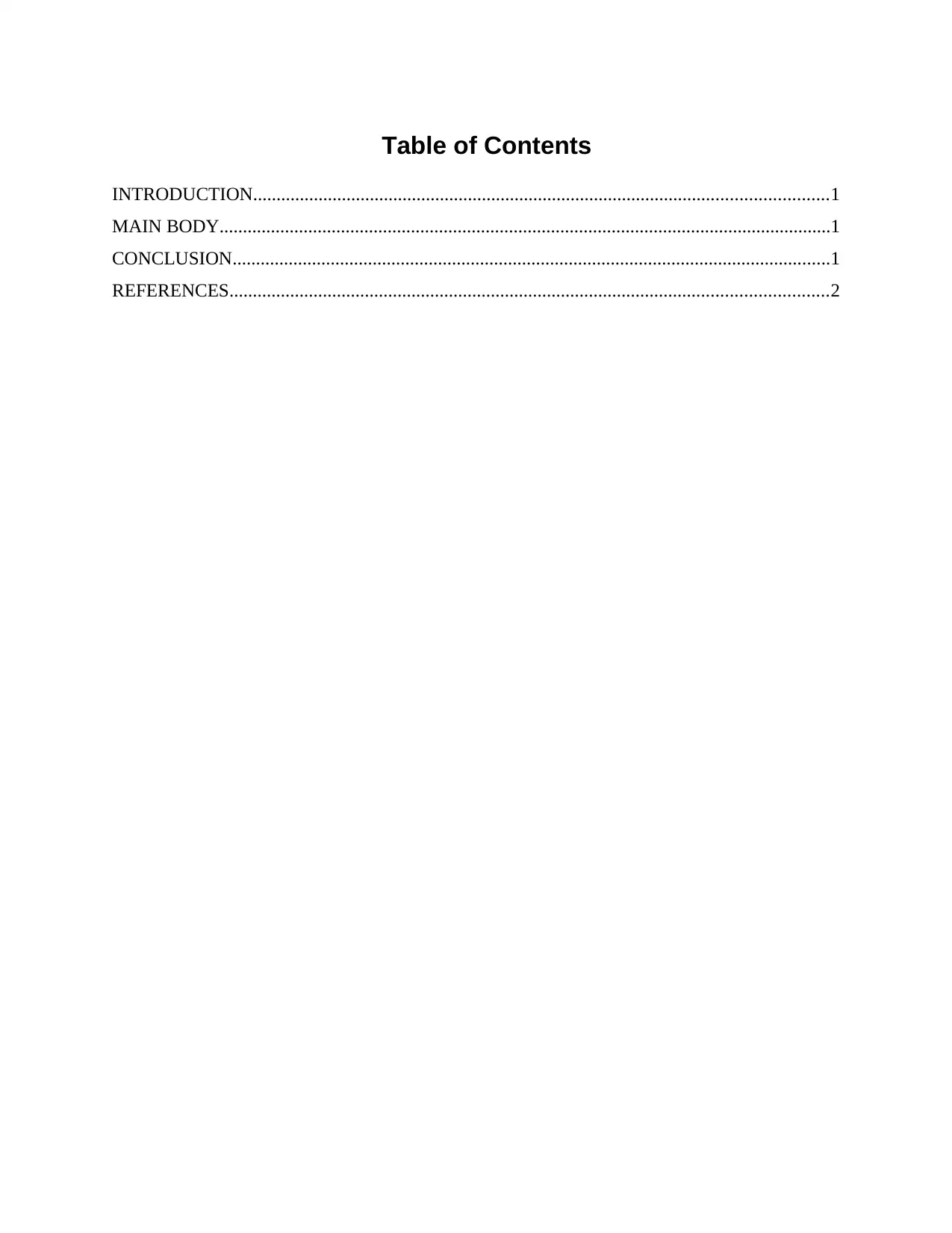
Table of Contents
INTRODUCTION...........................................................................................................................1
MAIN BODY...................................................................................................................................1
CONCLUSION................................................................................................................................1
REFERENCES................................................................................................................................2
INTRODUCTION...........................................................................................................................1
MAIN BODY...................................................................................................................................1
CONCLUSION................................................................................................................................1
REFERENCES................................................................................................................................2
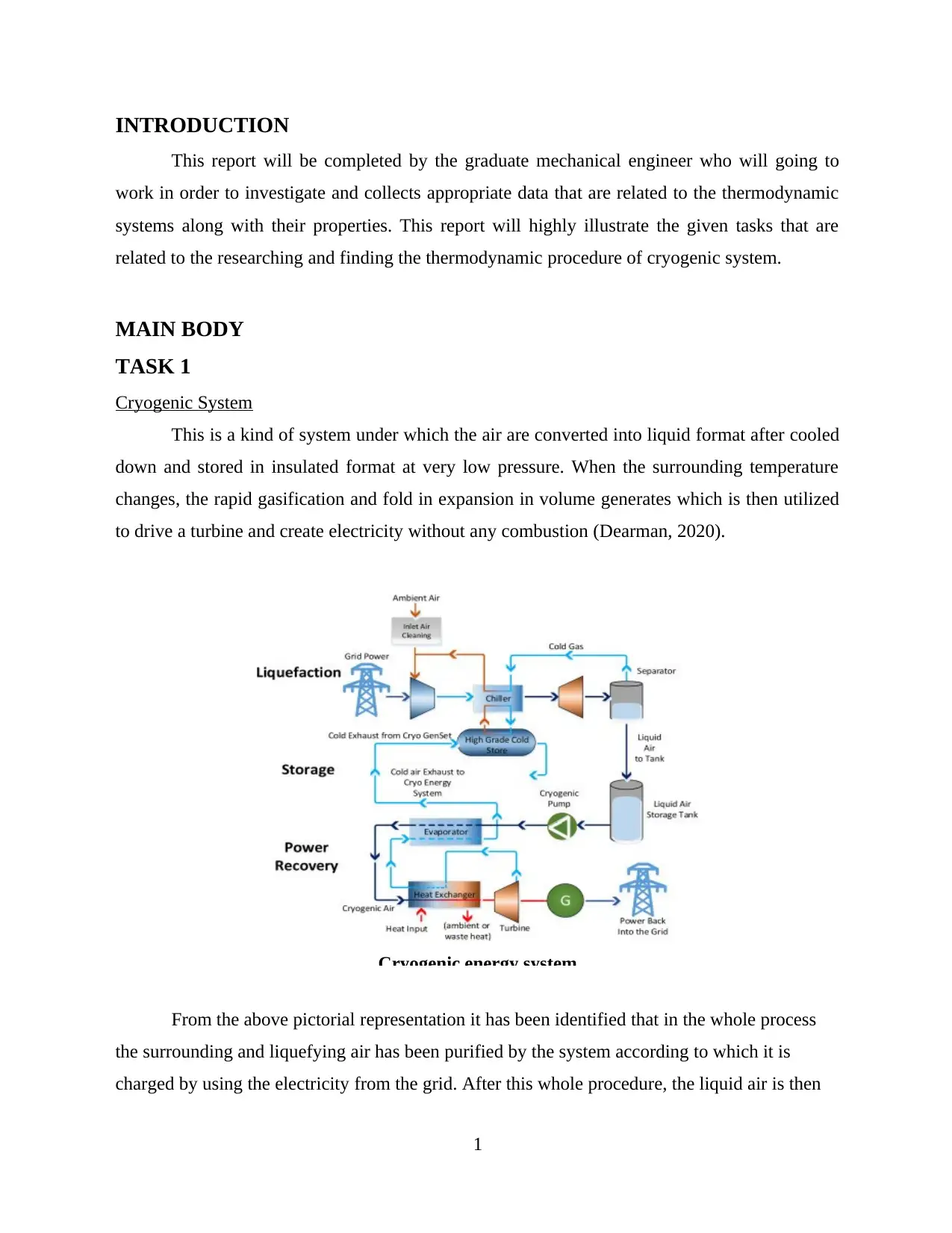
INTRODUCTION
This report will be completed by the graduate mechanical engineer who will going to
work in order to investigate and collects appropriate data that are related to the thermodynamic
systems along with their properties. This report will highly illustrate the given tasks that are
related to the researching and finding the thermodynamic procedure of cryogenic system.
MAIN BODY
TASK 1
Cryogenic System
This is a kind of system under which the air are converted into liquid format after cooled
down and stored in insulated format at very low pressure. When the surrounding temperature
changes, the rapid gasification and fold in expansion in volume generates which is then utilized
to drive a turbine and create electricity without any combustion (Dearman, 2020).
Cryogenic energy system
From the above pictorial representation it has been identified that in the whole process
the surrounding and liquefying air has been purified by the system according to which it is
charged by using the electricity from the grid. After this whole procedure, the liquid air is then
1
This report will be completed by the graduate mechanical engineer who will going to
work in order to investigate and collects appropriate data that are related to the thermodynamic
systems along with their properties. This report will highly illustrate the given tasks that are
related to the researching and finding the thermodynamic procedure of cryogenic system.
MAIN BODY
TASK 1
Cryogenic System
This is a kind of system under which the air are converted into liquid format after cooled
down and stored in insulated format at very low pressure. When the surrounding temperature
changes, the rapid gasification and fold in expansion in volume generates which is then utilized
to drive a turbine and create electricity without any combustion (Dearman, 2020).
Cryogenic energy system
From the above pictorial representation it has been identified that in the whole process
the surrounding and liquefying air has been purified by the system according to which it is
charged by using the electricity from the grid. After this whole procedure, the liquid air is then
1
⊘ This is a preview!⊘
Do you want full access?
Subscribe today to unlock all pages.

Trusted by 1+ million students worldwide

stored into insulated tank at a very low pressure. At the time of discharge, the liquid air is
pumped out where it can be utilized for cooling purpose. If the air vaporizes, it can drive through
turbine and thus generate electricity (Dooner, 2017).
TASK 2
(A) As per the law of thermodynamics, it has been identified that energy can never be created
nor destroyed, it can only be transferred or changed from one form to another.
The above picture shows steam power plant in which the coal or nuclear energy has been
transferred into steam which flows into a turbine and then move towards the generator where it
would create electricity along with lot amount of heat. It is basically a plant in which high
pressure steam would be transferred into prime mover which is a kind of turbine under which the
electricity generates. With the generation of electricity, the steam coming out from the prime
mover which is at very low temperature and then move towards the condenser under which the
steam again covert back into the form of water. The water then flows into the feed pump which
is accountable to pump high pressure water into the boiler (Urieli, 2020). Afterwards, the high
pressure water enters into the boiler which will then be heated by the coal or nuclear energy.
Once it is heated completely, the high pressure steam again drawn into the prime mover and the
whole procedure will continue constantly.
2
pumped out where it can be utilized for cooling purpose. If the air vaporizes, it can drive through
turbine and thus generate electricity (Dooner, 2017).
TASK 2
(A) As per the law of thermodynamics, it has been identified that energy can never be created
nor destroyed, it can only be transferred or changed from one form to another.
The above picture shows steam power plant in which the coal or nuclear energy has been
transferred into steam which flows into a turbine and then move towards the generator where it
would create electricity along with lot amount of heat. It is basically a plant in which high
pressure steam would be transferred into prime mover which is a kind of turbine under which the
electricity generates. With the generation of electricity, the steam coming out from the prime
mover which is at very low temperature and then move towards the condenser under which the
steam again covert back into the form of water. The water then flows into the feed pump which
is accountable to pump high pressure water into the boiler (Urieli, 2020). Afterwards, the high
pressure water enters into the boiler which will then be heated by the coal or nuclear energy.
Once it is heated completely, the high pressure steam again drawn into the prime mover and the
whole procedure will continue constantly.
2
Paraphrase This Document
Need a fresh take? Get an instant paraphrase of this document with our AI Paraphraser
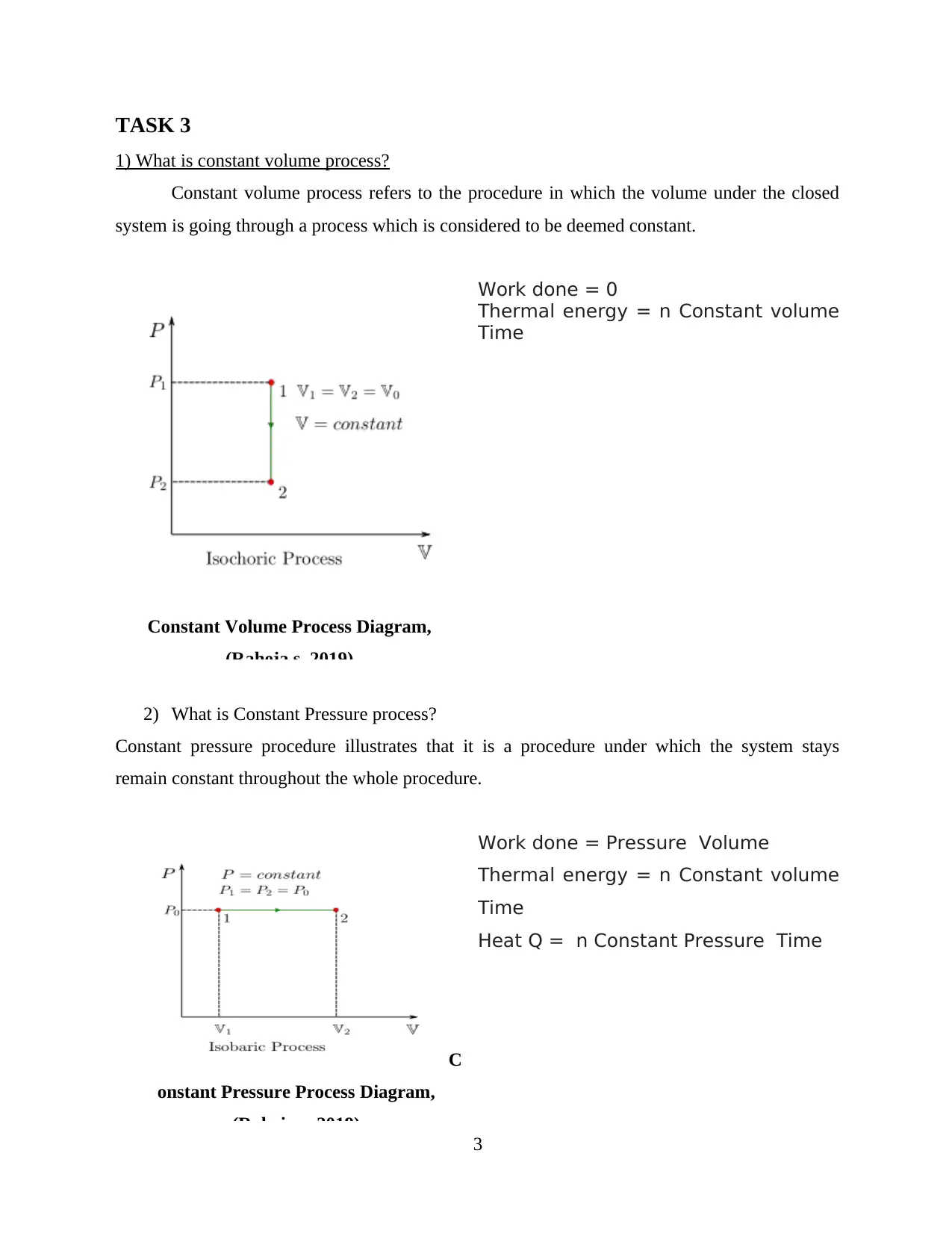
TASK 3
1) What is constant volume process?
Constant volume process refers to the procedure in which the volume under the closed
system is going through a process which is considered to be deemed constant.
Work done = 0
Thermal energy = n Constant volume
Time
2) What is Constant Pressure process?
Constant pressure procedure illustrates that it is a procedure under which the system stays
remain constant throughout the whole procedure.
Work done = Pressure Volume
Thermal energy = n Constant volume
Time
Heat Q = n Constant Pressure Time
3
Constant Volume Process Diagram,
(Raheja,s.,2019)
C
onstant Pressure Process Diagram,
(Raheja,s.,2019)
1) What is constant volume process?
Constant volume process refers to the procedure in which the volume under the closed
system is going through a process which is considered to be deemed constant.
Work done = 0
Thermal energy = n Constant volume
Time
2) What is Constant Pressure process?
Constant pressure procedure illustrates that it is a procedure under which the system stays
remain constant throughout the whole procedure.
Work done = Pressure Volume
Thermal energy = n Constant volume
Time
Heat Q = n Constant Pressure Time
3
Constant Volume Process Diagram,
(Raheja,s.,2019)
C
onstant Pressure Process Diagram,
(Raheja,s.,2019)
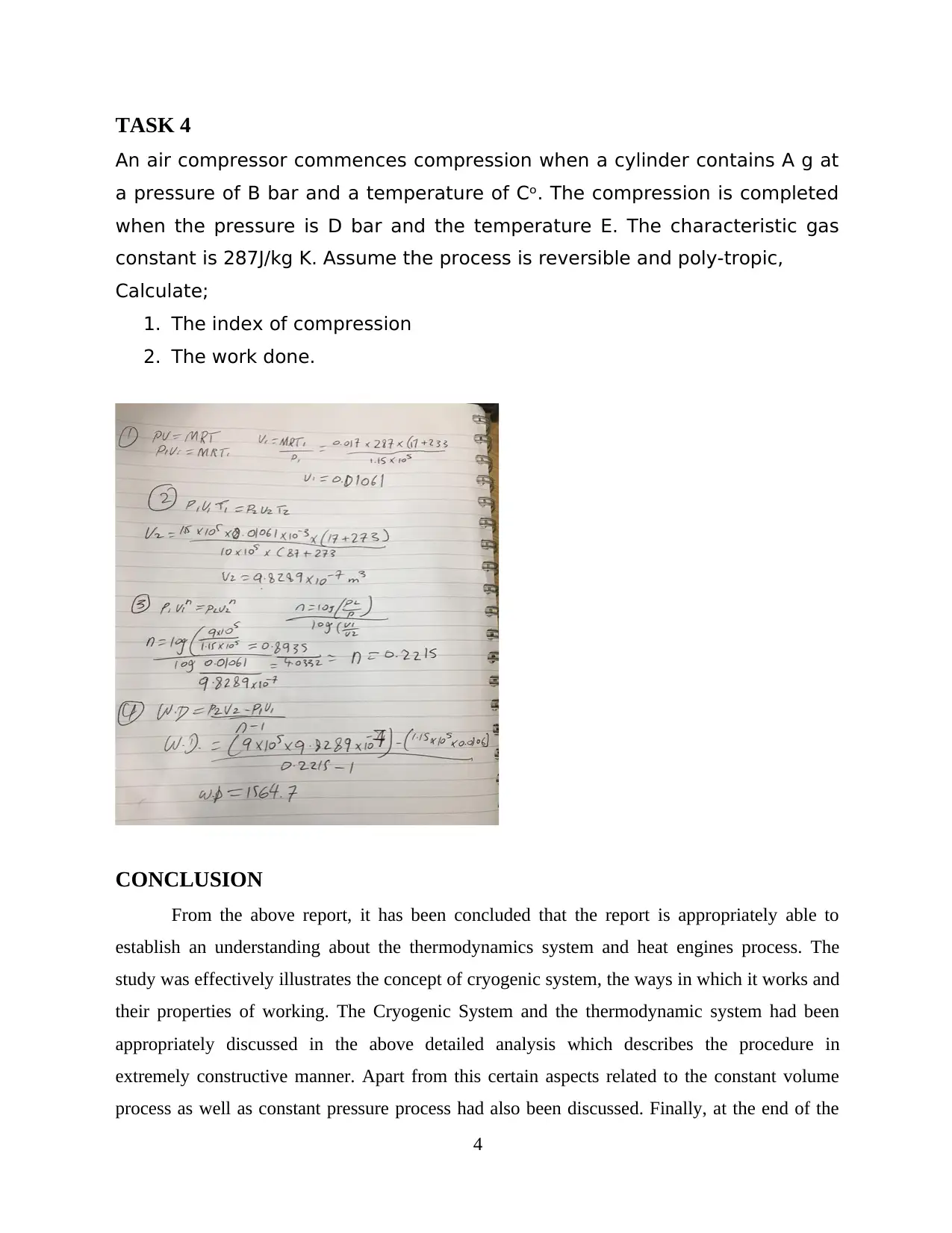
TASK 4
An air compressor commences compression when a cylinder contains A g at
a pressure of B bar and a temperature of Cᵒ. The compression is completed
when the pressure is D bar and the temperature E. The characteristic gas
constant is 287J/kg K. Assume the process is reversible and poly-tropic,
Calculate;
1. The index of compression
2. The work done.
CONCLUSION
From the above report, it has been concluded that the report is appropriately able to
establish an understanding about the thermodynamics system and heat engines process. The
study was effectively illustrates the concept of cryogenic system, the ways in which it works and
their properties of working. The Cryogenic System and the thermodynamic system had been
appropriately discussed in the above detailed analysis which describes the procedure in
extremely constructive manner. Apart from this certain aspects related to the constant volume
process as well as constant pressure process had also been discussed. Finally, at the end of the
4
An air compressor commences compression when a cylinder contains A g at
a pressure of B bar and a temperature of Cᵒ. The compression is completed
when the pressure is D bar and the temperature E. The characteristic gas
constant is 287J/kg K. Assume the process is reversible and poly-tropic,
Calculate;
1. The index of compression
2. The work done.
CONCLUSION
From the above report, it has been concluded that the report is appropriately able to
establish an understanding about the thermodynamics system and heat engines process. The
study was effectively illustrates the concept of cryogenic system, the ways in which it works and
their properties of working. The Cryogenic System and the thermodynamic system had been
appropriately discussed in the above detailed analysis which describes the procedure in
extremely constructive manner. Apart from this certain aspects related to the constant volume
process as well as constant pressure process had also been discussed. Finally, at the end of the
4
⊘ This is a preview!⊘
Do you want full access?
Subscribe today to unlock all pages.

Trusted by 1+ million students worldwide

report, calculations related to the index of compression and the work done will also been
analysed in above representing report.
5
analysed in above representing report.
5
Paraphrase This Document
Need a fresh take? Get an instant paraphrase of this document with our AI Paraphraser
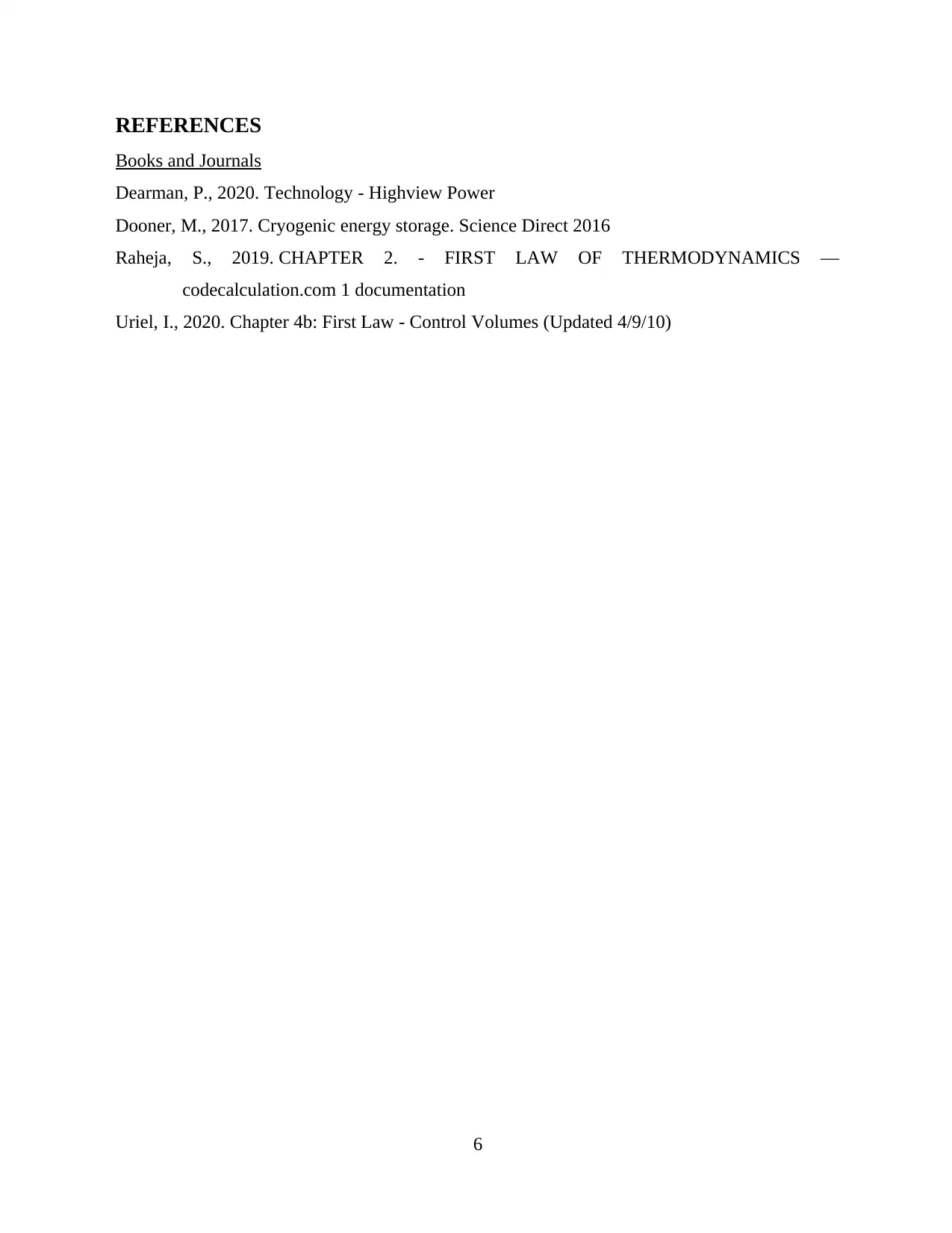
REFERENCES
Books and Journals
Dearman, P., 2020. Technology - Highview Power
Dooner, M., 2017. Cryogenic energy storage. Science Direct 2016
Raheja, S., 2019. CHAPTER 2. - FIRST LAW OF THERMODYNAMICS —
codecalculation.com 1 documentation
Uriel, I., 2020. Chapter 4b: First Law - Control Volumes (Updated 4/9/10)
6
Books and Journals
Dearman, P., 2020. Technology - Highview Power
Dooner, M., 2017. Cryogenic energy storage. Science Direct 2016
Raheja, S., 2019. CHAPTER 2. - FIRST LAW OF THERMODYNAMICS —
codecalculation.com 1 documentation
Uriel, I., 2020. Chapter 4b: First Law - Control Volumes (Updated 4/9/10)
6
1 out of 8
Related Documents
Your All-in-One AI-Powered Toolkit for Academic Success.
+13062052269
info@desklib.com
Available 24*7 on WhatsApp / Email
![[object Object]](/_next/static/media/star-bottom.7253800d.svg)
Unlock your academic potential
Copyright © 2020–2025 A2Z Services. All Rights Reserved. Developed and managed by ZUCOL.





